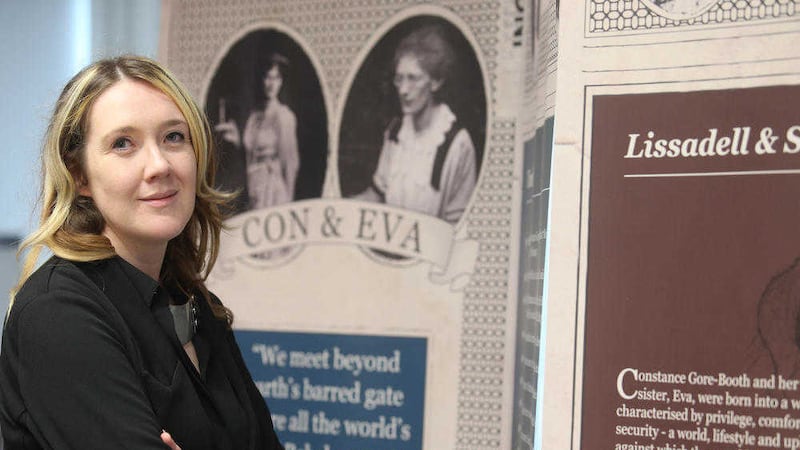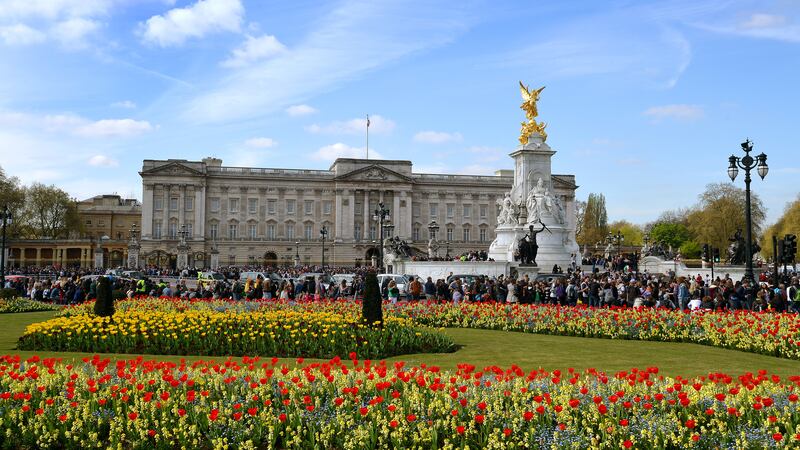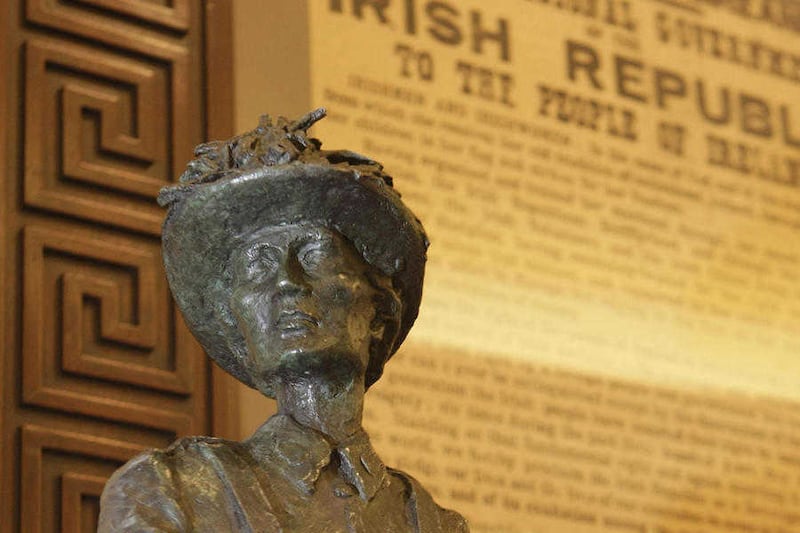Previously unseen archive material about Easter Rising leader Countess Constance Markievicz is to go on tour.
The Con and Eva exhibition featuring "hidden gems" from the Public Record Office's Lissadell archive, Manchester School of Art, University College Dublin (UCD) and Aarhus University in Denmark explores the lives of Countess Markievicz and her sister Eva Gore-Booth.
The touring exhibition, which was launched at the PRONI office in Belfast's Titanic Quarter yesterday, will be on show until the end of the month and will then appear at venues across Ireland, including in libraries in the North and also at the upcoming Féile an Phobail.
Constance and Eva were born into a world characterised by privilege, comfort and security - a world, lifestyle and upbringing against which they would both ultimately rebel.
The sisters were brought up in Lissadell House, Co. Sligo.
Constance would become a revolutionary nationalist, militarist, suffragette, socialist and one of the leaders of the Easter Rising.
Eva would make her mark as a poet, dramatist, pacifist, committed suffragist and labour activist.
PRONI's head of public services, Stephen Scarth, said: "Both women rebelled in totally different ways.
"Constance was one of the leaders of the Easter Rising and is sentenced to death before is was commuted.
"Eva takes a different path and becomes a pacifist. The contrast is quite extreme."
The exhibition examines the role that theatre, literature and art play in both their lives, pacifism, socialism and the divergent political paths that they chose to follow.
This is reflected in artworks, private letters between the sisters, telegrams and also graffiti from Kilmainham Gaol.
Exhibition co-curator Fionna Barber, a reader in art history at Manchester School of Art, explained that among the previously unseen items is a watercolour by Constance of Irish revolutionary Wolfe Tone's grave.
"It has never been exhibited publicly before and is at a very important part of her political development where she is becoming more politically aware and this is reflected in her own art practice," Ms Barber said.
Laura McAtackney, an associate Professor in sustainable heritage management at Aarhus University, initiated the project after she unearthed notebooks while doing work about Kilmainham Gaol.
"I found some notebooks from Constance in another archive which had been mislisted," she said.
"Some of the images have never been seen before, never been exhibited, and nobody knew they belonged to Constance.
"We wanted to show a different side to Constance and bring her sister more to the forefront."
For more about Con and Eva visit https://www.nidirect.gov.uk/proni







